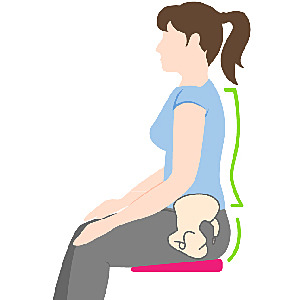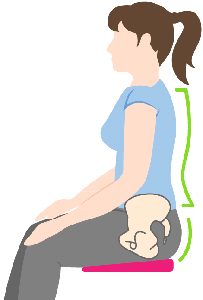9 November 2016
527 view(s)
Think You Know How to Do Kegels? Think Again!
We all know that kegels are an important part of every woman's health - preventing pelvic floor disorders like incontinence and prolapse. Just a few minutes each day can keep your pelvic floor healthy. But what if you're not seeing any benefits from your kegels? You could be making one of these 5 mistakes! But don't worry, we can tell you how to fix them...
 If you're pushing down when you do kegels then they will be making your symptoms worse! Bearing down on your pelvic floor muscles will strain and overstretch them. This can eventually cause a prolapse. If your pelvic floor disorder is getting worse despite doing kegels you need to fix your technique ASAP!
When learning how to do kegels correctly, you should always be lifting your muscles upwards. Imagine that you are trying to stop yourself from peeing mid-flow - that's the correct movement. Sit on a chair and try to lift your vagina and anus away from the seat without moving your pelvis. This will help you to perfect your technique.
If you're pushing down when you do kegels then they will be making your symptoms worse! Bearing down on your pelvic floor muscles will strain and overstretch them. This can eventually cause a prolapse. If your pelvic floor disorder is getting worse despite doing kegels you need to fix your technique ASAP!
When learning how to do kegels correctly, you should always be lifting your muscles upwards. Imagine that you are trying to stop yourself from peeing mid-flow - that's the correct movement. Sit on a chair and try to lift your vagina and anus away from the seat without moving your pelvis. This will help you to perfect your technique.
It's easy to slouch without realising, with many of us never sitting up straight. But this doesn't just cause back pain - it makes your kegels much less effective! Sitting up straight while you exercise will make kegels 24% stronger. When your torso is aligned it can support your insides properly, giving your pelvic floor more room to contract properly.
Make your posture perfect during kegels. Place your bum at the back of your chair and straighten your spine. Try using a posture cushion like our Natural Health Support Wedge Cushion to give you a boost. It's been specially designed with kegels in mind - it even has a space for your Kegel8 probe!
1: Bearing Down Instead of Lifting
 If you're pushing down when you do kegels then they will be making your symptoms worse! Bearing down on your pelvic floor muscles will strain and overstretch them. This can eventually cause a prolapse. If your pelvic floor disorder is getting worse despite doing kegels you need to fix your technique ASAP!
When learning how to do kegels correctly, you should always be lifting your muscles upwards. Imagine that you are trying to stop yourself from peeing mid-flow - that's the correct movement. Sit on a chair and try to lift your vagina and anus away from the seat without moving your pelvis. This will help you to perfect your technique.
If you're pushing down when you do kegels then they will be making your symptoms worse! Bearing down on your pelvic floor muscles will strain and overstretch them. This can eventually cause a prolapse. If your pelvic floor disorder is getting worse despite doing kegels you need to fix your technique ASAP!
When learning how to do kegels correctly, you should always be lifting your muscles upwards. Imagine that you are trying to stop yourself from peeing mid-flow - that's the correct movement. Sit on a chair and try to lift your vagina and anus away from the seat without moving your pelvis. This will help you to perfect your technique.


